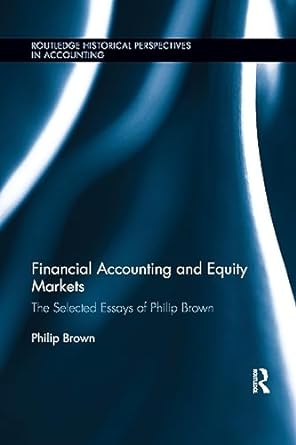Question
The following independent scenarios describe auditor decisions made during an audit engagement. 1. Chen Li worked on the audit of American Healthcare Associations (AHA), which
The following independent scenarios describe auditor decisions made during an audit engagement. 1. Chen Li worked on the audit of American Healthcare Associations (AHA), which operates hospitals and outpatient centers in Texas and Oklahoma. Chen was assigned responsibility to audit the allowance for patient receivables. For the past several years, AHAs accounting policy required that the recorded allowance for patient receivables be set to equal the total amount of receivables over 180 days past due. Prior audit testing of the allowance in previous years has found that the subsequent write-offs of patient receivables has closely approximated the amount included in the allowance. During the current year audit, Chen examined the amount recorded in the general ledger allowance account and reconciled that amount to the amount shown in AHAs consolidated aged trial balance in the 180 days past due amount. Given that the dollar amounts agreed, Chen concluded that the allowance was in accordance with AHA accounting policy and fairly stated. While media reports and other industry publications suggested that recent regulatory changes in healthcare insurance were affecting patients ability to pay, Chen concluded that AHAs allowance was fairly stated given the amounts complied with AHAs policy. 2. Sherry Zipersky was assigned responsibility for evaluating the goodwill impairment testing process at Georgia Metals, Inc. Because Georgia Metals growth strategy was based mostly on acquisitions, the company had experience in performing annual impairment tests of goodwill. The client provided Sherry extensive information along with detailed schedules that documented managements testing approaches, and it provided her support for key assumptions made by management. Sherry reviewed the schedules in detail and tested the key calculations. While Sherrys firm has a requirednumber of valuation specialists as part of its staff, Sherry decided not to request their assistance in making an independent assessment of goodwill impairment given that the clients documentation was extensive and it would take too much time to have the firms valuation specialists complete an independent assessment. 3. Jason Jackson was responsible for auditing the occurrence of sales transactions in the audit of Asheville Manufacturing. As part of his testing, he reviewed the contracts signed between Asheville Manufacturing and its customers to determine that the transaction terms justified the recording of sales for the year under audit. In addition, he examined documentation related to the sales transactions, including the customers purchase orders, shipping documents, and invoices generated by Asheville. That evidence examined supported the correct recording of sales in the current year. However, Jason also noticed in the customer files copies of email exchanges between Asheville Manufacturing sales agents and the customers suggesting that some of the terms of the sales agreements could be waived at the customers discretion. Jason decided to rely on the contracts and sales transactions documentation to conclude that the sales were properly stated, given that the other information was only included in emails. 4. Allison Garrett works on a number of audits of technology equipment manufacturers and has developed extensive knowledge and experience in the industry. On the recent audit engagement of financial statements for Zurich Technologies, Allison was responsible for auditing the valuation of inventories, including the reserve for obsolescence. Given her familiarity with the industry, Allison decided to conduct a quick substantive analytical procedure regarding the days in inventory and determined that the reserve was fairly stated, given it was in line with reserves established by some of her other clients. She determined that additional evidence was not necessary to obtain because of her experience with other clients.
For each of the scenarios listed above, describe the most likely judgment trap that ultimately biased the auditors decision making in the audit.
Step by Step Solution
There are 3 Steps involved in it
Step: 1

Get Instant Access to Expert-Tailored Solutions
See step-by-step solutions with expert insights and AI powered tools for academic success
Step: 2

Step: 3

Ace Your Homework with AI
Get the answers you need in no time with our AI-driven, step-by-step assistance
Get Started


